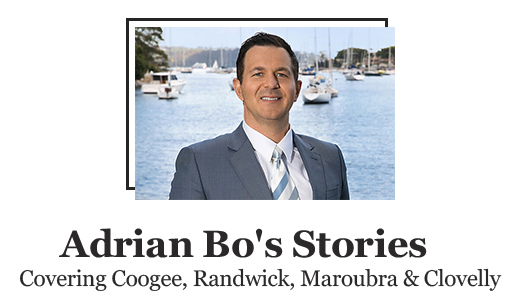The Maroubra Speedway
Adrian Bo here, and today, I’m on the corner of Anzac Parade and Fitzgerald Avenue in the beautiful suburb of Maroubra, which used to be the location of the famous Maroubra Speedway, also known as the Olympia Motor Speedway. Now the Maroubra Speedway was opened in December 1925 as a banked 1.3 kilometres concrete bowl racetrack with it’s first meeting attracting over 70,000 spectators. The track was built on a parcel of 33 hectares of crown land on a huge sandhill by a syndicate of Sydney businessmen. This included the draining of a snake infested marsh. 120,000 tonnes of sand were removed and 13,000 tonnes of concrete were used to build the actual track itself. The track was surrounded with six acres of luscious turf lawns as well as grass, grandstands, and it included a Tote betting ring where locals would wager on each race just as they would at Randwick Racecourse.
There was also an adjacent sandhill known as Scotsman’s Hill where people could watch the races without paying any entry fee at all. The regular meetings, where the fastest cars averaging speeds of over 100 miles per hour, established stars such as Hope Bartlett, Charles East, Fred Barlow and Alan Cooper, as well as the most successful driver at Maroubra Speedway, which was Phil Garlick, who became a national motorsport star before his Alvis careered off the top of the Maroubra banked track and he smashed his head on the light pole, unfortunately killing him instantly. There were other deaths due to the cars flying off the edge of the track, which didn’t help the track’s reputation. More importantly, The Depression set in, which across Sydney, and a competitor track opened which hit attendances heavily and caused Maroubra Speedway to be eventually closed in 1928, only three years after opening. Several attempts were made to reopen the speedway in 1930, but eventually, the land was resumed by the New South Wales Housing Commission in 1947, to build an estate of 1,100 houses called Coral Sea Park, which was built between 1951 and 1961.
Streets in the new estate were named after warships that had been engaged in the Battle of the Coral Sea, for example, Chester Avenue was named after USS Chester, Astoria Circuit was named after the USS Astoria, and Chicago Avenue was named after the USS Chicago, Lexington Place was even named after the USS Lexington, Morris Place, again, after the USS Morris, Neosho Way was the USS Neosho, Perkins Street after the USS Perkins, Sims Lane and Sims Grove after the USS Sims. The Coral Sea Park estate has evolved considerably. RCC have planned upgrades to the Coral Sea Park Playspace as the Randwick CC’s ongoing upgrades to the local amenities mean that the area has an ever rosier future ahead thanks to the Randwick CC. I sold number 50 Chester Avenue on a 626 square metre block ripe for development for $2.15 million and a unit on 59 Chester Avenue for 600,000. Our agency has also sold properties recently on New Orleans Crescent, Astoria Circuit, Anzac Parade, Portland Crescent, and also, Minneapolis Crescent. I hope that’s been of interest. I feel the stories of our local history should never be forgotten. Therefore we never have to worry about this cancel culture, ridiculousness that’s been talked about. Enjoy the Spring in Maroubra, and always remember, your home is worth more with Adrian Bo.


